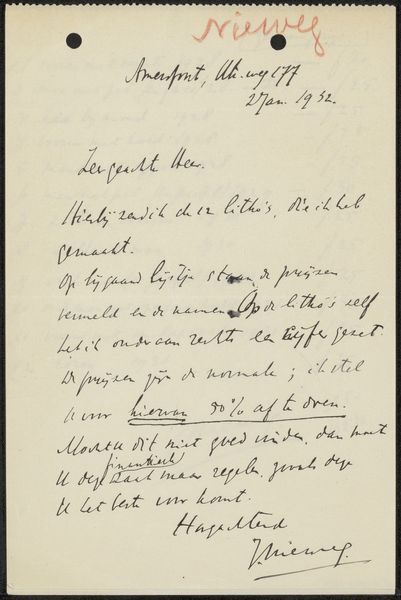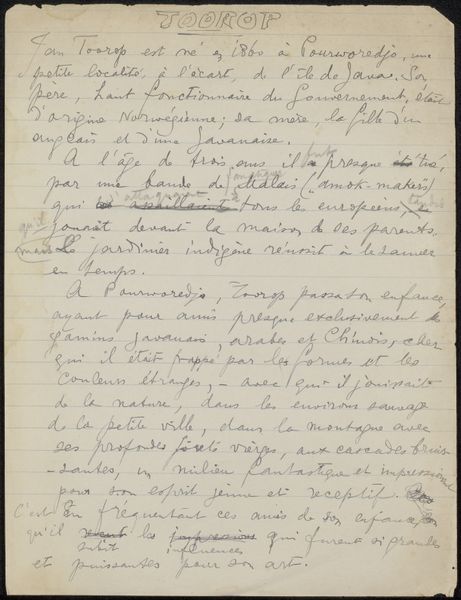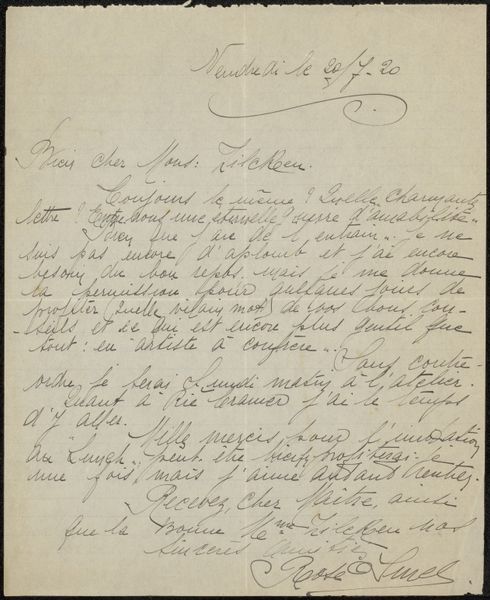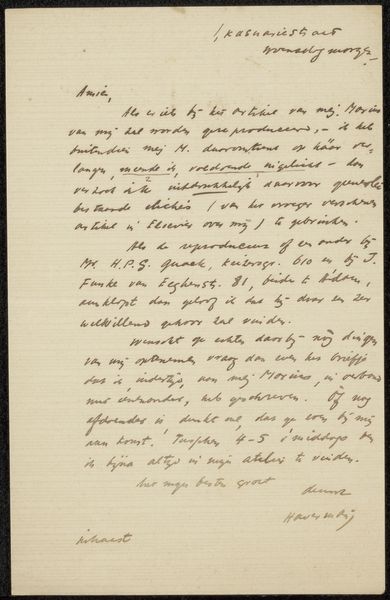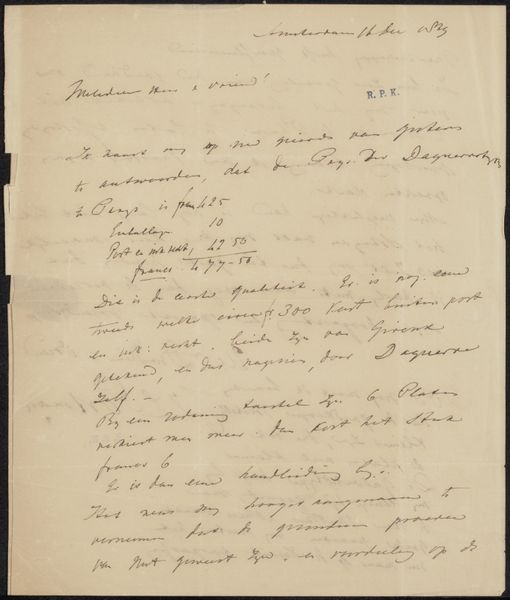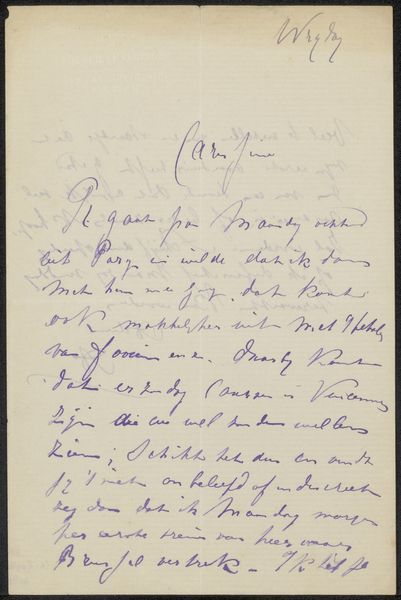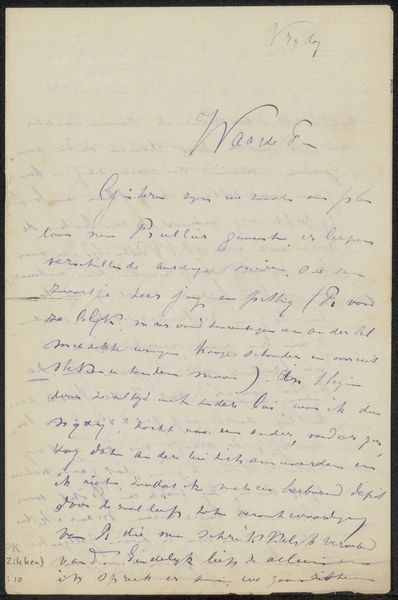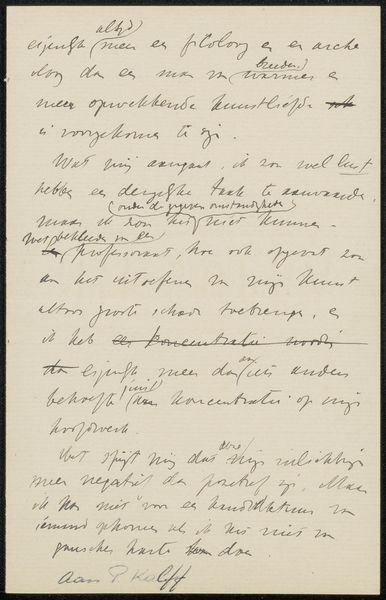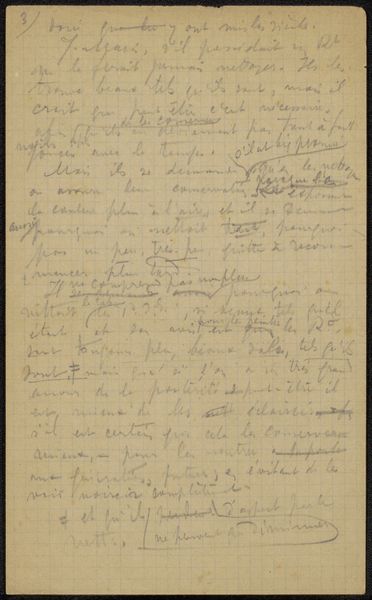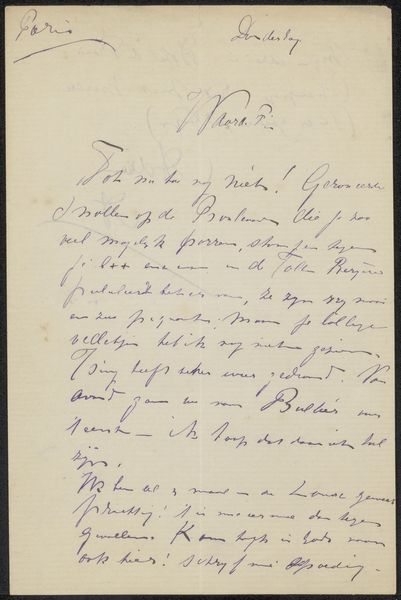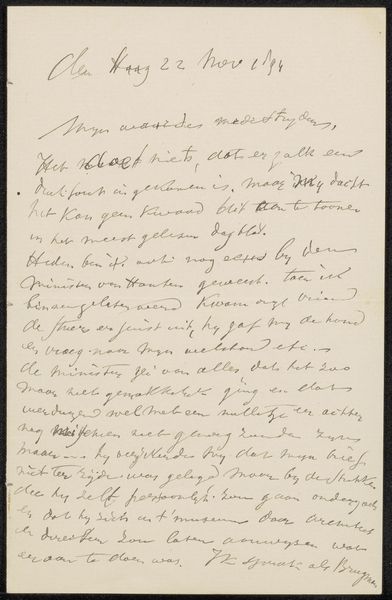
drawing, paper, ink
#
drawing
#
paper
#
ink
#
calligraphy
Copyright: Rijks Museum: Open Domain
Editor: Here we have "Brief aan Philip Zilcken," likely from 1917, a drawing in ink on paper by Adriaan Pit. It's quite literally a handwritten letter, a seemingly mundane object elevated to art within a museum. What aspects of its creation and context strike you as most significant? Curator: Well, the labor immediately comes to mind. Consider the physical act of writing, the embodied energy expended in forming each character. Then think of the paper itself: its manufacture, the resources extracted, and the social relations involved in its production and distribution. Editor: It’s interesting to think of the paper as more than just a blank surface… Almost a commodity itself. Curator: Precisely. Even the ink—where did its raw materials come from? Who processed it? The letter as a material object speaks volumes about early 20th century Dutch society and its connections to broader economies. Editor: So you're suggesting that even a personal letter implicates a whole web of material and social processes? Curator: Absolutely. Consider the purpose of this letter – presumably communication, negotiation. But what does the physical presence of it, preserved in a museum, tell us about the value we place on communication and the act of handwriting in an age of mass digital communications? Editor: I never considered how something so personal could be read through a materialist lens, emphasizing the wider implications. Curator: Every object is a trace of its making and its historical context, which reflects its materials, manufacture, and the systems that supported its creation. Editor: Fascinating. Thanks, I see so much more to consider now.
Comments
No comments
Be the first to comment and join the conversation on the ultimate creative platform.
